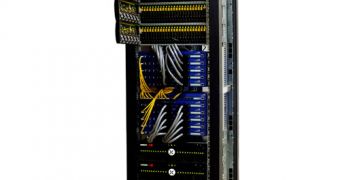When we think about supercomputers we imagine something ?big. A traditional supercomputer can draw enough power to run a small city, cost millions of dollars to operate, and last but not least, occupy a large amount of space. But the cost of electrical power consumption, computer floor space and lost computing time because of system failures may make them obsolete.
Supercomputers of the future are not bulky and always hungry on energy, but rather small, high-performance and low-power consumption. A research program is taking place at Los Alamos National Laboratory, on a prototype computer called "Green Destiny".
A program launching this month, called Green500, will rank the world's most powerful computers, not just by their performance, but more on a base of energy efficiency and reliability. "Wasted power can equate to wasteful carbon emissions when the electricity comes from coal sources", says Kirk Cameron of Virginia Tech. An increase of ten degrees Celsius in the temperature of a processor, mean a double risk of failure.
Computing intensive businesses depend on servers to handle enormous amounts of data at the same time; an eventual server malfunction could produce up to 6.5 million dollars losses.
Just to show how energy-intensive some of the supercomputers are, scientists give the example of the Earth Simulator situated in Japan, which during operation generates enough heat to warm a domed stadium, requiring extensive cooling systems and round the clock maintenance, which generates increased costs to operate it.
"Green Destiny" representing a new type of supercomputer will be powered by processors produced by Transmeta Corporation, planted on server boards made by RLX Technologies. It will use about one third the power used to operate the current supercomputers, and will only occupy five percent of the space, providing the same performance. "Green Destiny" will produce only one-tenth of the heat.

 14 DAY TRIAL //
14 DAY TRIAL //